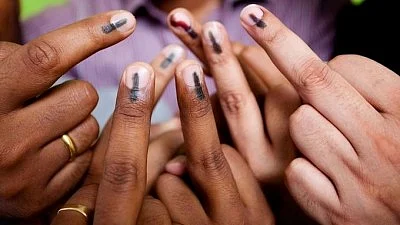The 2024 Lok Sabha election results saw a shift of a section of the Dalit community’s voter base towards the INDIA bloc, besides strong support from Muslims and an increase in support from OBCs in key states.
But that isn’t the only consolidation that the elections saw. Upper caste Hindu communities, traditionally a BJP supporting group, also consolidated firmly behind the NDA. While the Muslim and Dalit votes, referred commonly in election analysis and by politicians as ‘vote banks’ are oft-discussed, the consolidation of the upper caste Hindu voter base mostly goes unaddressed and isn’t referred to as the same.
As per a detailed survey by the CSDS-Lokniti, published in The Hindu, 60 per cent of the Upper Caste voters consolidated behind the NDA: 53 per cent behind BJP and 7 per cent behind the BJP’s allies, making it a total of 60 per cent. This is almost the same as the 2019 elections. In certain states, this consolidation was even more prominent.
As per the CSDS-Lokniti survey, about 38 per cent Muslims voted for the Congress and 27 per cent voted for Congress' allies. "Muslim voters are at the most 6% (14 x 0.38) assured vote for the Congress. UC are about 10% (19 x 0.53) assured vote for the BJP," Yogendra Yadav, political analyst, told The Quint.
Across States, Upper Caste Hindus Supported BJP and NDA
For example, in Uttar Pradesh, 79 per cent of upper caste Hindus (including Brahmins, Rajputs and others) voted for the NDA, as per the CSDS-Lokniti survey. Among the state’s Rajputs specifically, 89 per cent supported the BJP.
In Madhya Pradesh, where the BJP had a clean sweep winning all 25 seats in the state, the party was backed by 72 per cent upper caste Hindus.
In Rajasthan, this figure was 65 per cent; in Karnataka NDA was backed by 71 per cent upper caste Hindus.
There were some states where the BJP-NDA's support among upper caste Hindus fell, for example in Bihar, there was a 15 per cent decrease in the support it enjoyed in 2019. Despite this, in Bihar too, the support for NDA was still at 53 per cent among upper caste Hindus.
In Telangana, where BJP has been attempting to make in roads, the party benefited from the losses of the BRS (previously TRS). Here too, the BJP enjoyed the support of 53 per cent of the upper caste Hindus.
Even in Punjab, where BJP isn't even a dominant player, Upper Caste Hindu support for the party was at 56 per cent according to the CSDS survey.
How Other Caste Groups Voted
While by and large, Hindu upper caste voter base has stood behind the BJP and its allies, and the Muslim community behind the INDIA (65 per cent), there is more diversity to be found among Dalits and OBCs.
While 36 per cent Dalits backed NDA (BJP and allies), this was a 5 per cent decrease than NDA’s support among Dalits in 2019. Moreover, the opposition’s primary gains among Dalits weren't due to Congress but due to its allies; a total of 32 per cent Dalits backed the INDIA bloc, with an increment of 8 per cent for Congress’ allies compared to 2019.
Among Hindu OBCs, 35 per cent upper OBCs backed INDIA, while 48 per cent backed NDA. Among lower OBCs, 25 per cent lower OBCs backed INDIA, and 58 per cent backed NDA.
The BJP and NDA’s biggest gains seem to be among the Adivasi community. 51 per cent Adivasis or tribals voted for the NDA, while 31 per cent Adivasis voted for the INDIA bloc.
Who Gets Called A Vote Bank And Who Doesn't
In May 2024, India Today magazine carried a cover piece called ‘Mandate 2024: The Muslim factor’. “Fragmented in the past, the community’s vote seems to be consolidating in this general election,” the article said.
While consolidation was seen among both, Muslims as well as upper caste Hindus, the factors at play were different.
Yogendra Yadav told The Quint that the level of consolidation in this election seen among Muslims "is due to the persecution that left them with no choice, but earlier too there was a bloc of Muslim votes that tended to vote together tactically." On the other hand, he added, upper caste Hindus tend to vote in a consolidated fashion "to preserve their privileges."
Moreover, while articles and studies analysing the Muslims a ‘vote bank’ are common, Hindu upper castes are hardly seen as a ‘vote bank’ in most analyses.
“The term ‘vote bank’ was initially used by academics for local constituency level analyses only. Then, in the 1960s, the term became popular among journalists who began using it for Muslims and Dalits nationally. The rich, powerful and upper castes have traditionally always voted for the dominant party, but you will never see them being described as a vote bank,” Hilal Ahmed, associate professor at CSDS, told The Quint.
Ahmed added that the popular understanding of a ‘vote bank’ doesn’t take into account all the existing sociological factors. “There is no central agency within any community telling them who to vote for, so it’s not some pre-planned strategy. Voters organically decide who they want to pick based on their circumstances,” Ahmed added.
